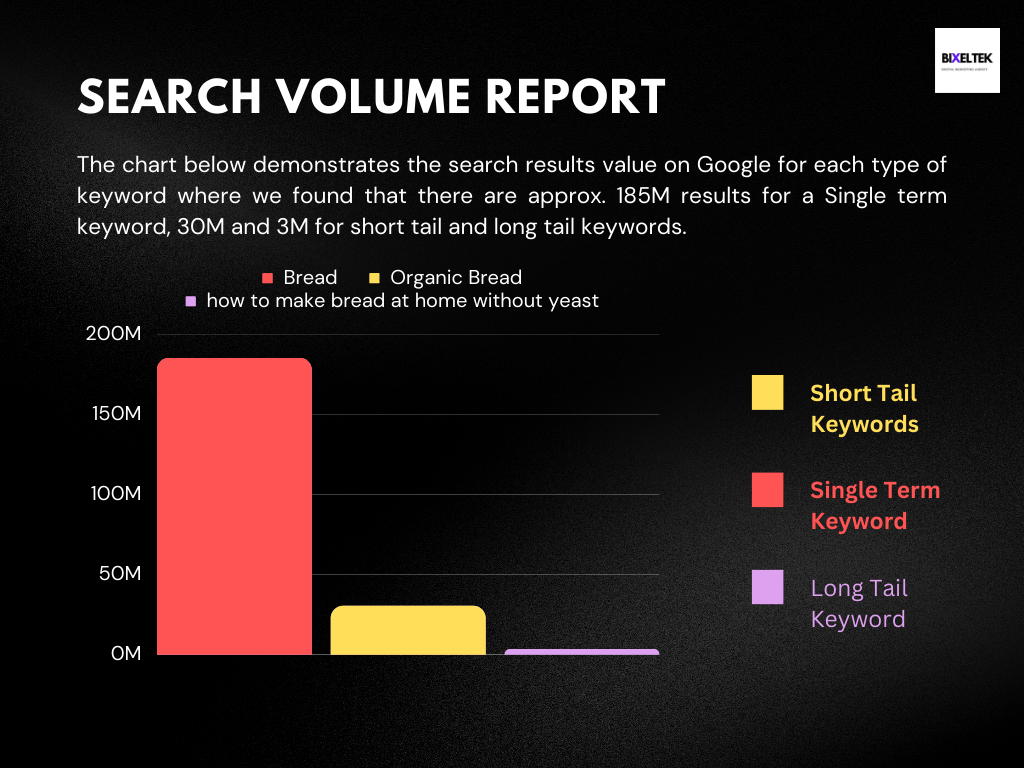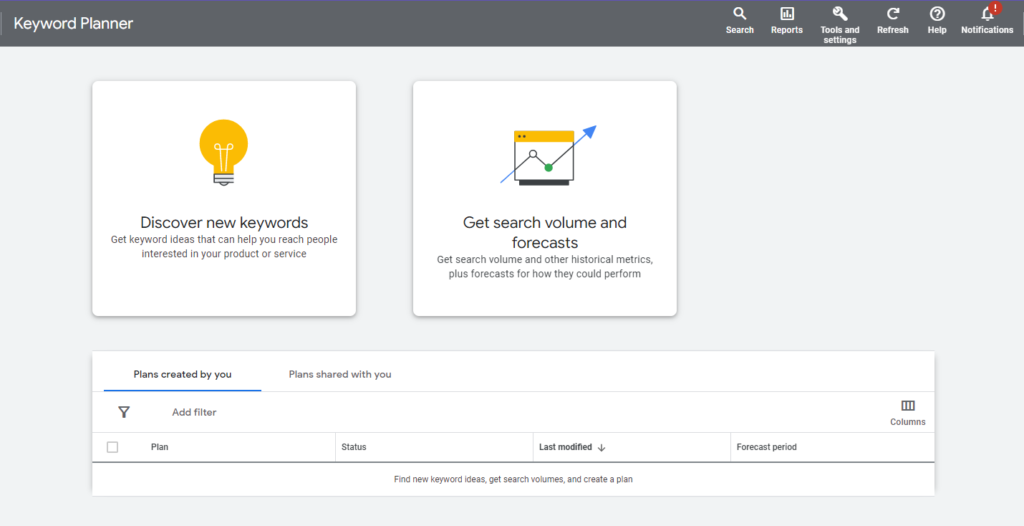Address
Suncity P&T Colony, Rajendra Nagar, Hyderabad.
Work Hours
Monday to Friday: 9 Am - 4 Pm EST
Saturday: 10 Am - 2 Pm EST
Address
Suncity P&T Colony, Rajendra Nagar, Hyderabad.
Work Hours
Monday to Friday: 9 Am - 4 Pm EST
Saturday: 10 Am - 2 Pm EST

When it comes to search engine optimization (SEO), one of the most important factors for improving your website’s ranking is keyword usage. However, not all keywords are created equal. While short-tail keywords may have high search volumes, they are often highly competitive, making it difficult for smaller businesses to rank for them. That’s where long tail keywords come in. In this article, we will discuss what long tail keywords are, why they are important, and how to use them effectively for SEO. By the end of this guide, you will have a better understanding of how a long tail keyword strategy can help your business skyrocket its rankings and attract more targeted traffic.

Long tail keywords are keyword phrases that are highly specific and longer than typical keywords. They are usually composed of three or more words and are less commonly used in search queries, thus the term “long-tail”. These keywords target niche audiences and are often more descriptive, providing more context to search engines about what a page is about. Examples of long tail keywords include “best gluten-free pizza delivery in Chicago” or “how to train a pug to roll over”. The more specific a long tail keyword is, the more likely it is to attract highly targeted traffic to a website.
Using long tail keywords in your SEO strategy has numerous benefits. Here are some of the most important:
Easier to Rank: Long tail keywords are less competitive than short-tail keywords, making them easier to rank for. This is especially useful for small businesses with limited marketing budgets that need to compete with larger companies in their industry. By targeting long tail keywords, you can increase your chances of ranking higher on search engine results pages (SERPs).
Targeted Traffic: Since long tail keywords are more specific, visitors who find your website through these keywords are more likely to be interested in what you have to offer. This can lead to higher conversion rates and better return on investment (ROI). By focusing on long tail keywords, you can attract highly targeted traffic to your site, which is more likely to convert into paying customers.
Less Expensive PPC Advertising: Long tail keywords have lower search volumes, which makes them less expensive to bid on in pay-per-click (PPC) advertising. This means that smaller businesses can compete with larger ones in paid search advertising without breaking the bank. By targeting long tail keywords in your PPC campaigns, you can increase your chances of getting your ads in front of the right people and drive more qualified traffic to your site.
The term “long-tail” was first coined by Chris Anderson, the former editor-in-chief of Wired Magazine. He used it to describe a statistical phenomenon in which the distribution of products sold follows a pattern that resembles a long tail, with a few popular products making up the “head” and a large number of less popular products making up the “tail”.
This concept was later applied to keyword usage in SEO, with short tail keywords representing the popular “head” and long-tail keywords representing the less popular “tail”. The name “long-tail” comes from the fact that the graph of keyword popularity resembles a long tail when plotted on a graph.
Long-tail keywords are less frequently searched for than short-tail keywords, but they make up a significant portion of search traffic when considered collectively. This is why they are an important part of any effective SEO strategy. By targeting long-tail keywords, businesses can attract targeted traffic to their website and improve their chances of ranking higher in search engine results pages.
Finding the right long-tail keywords can be a challenge, but with the right tools and strategies, it is possible to uncover hidden gems that can improve your SEO efforts. Here are some methods for discovering long-tail keywords:
Google’s Autocomplete Feature: One of the easiest ways to find long-tail keywords is to use Google’s autocomplete feature. Start by typing a keyword related to your niche into the search bar and see what suggestions come up. This can give you ideas for longer, more specific keyword phrases that you may not have thought of before.

Google’s People Also Ask (PAA) Feature: The PAA feature provides a list of questions related to your search query. This can give you insight into what people are searching for and help you identify long-tail keywords that you may not have considered otherwise.

Google’s “Related Searches”: At the bottom of the search engine results page, Google provides a list of related searches. This can be a great way to find long-tail keywords that are related to your niche.

Use Your Unique Selling Proposition (USP): Your USP is what sets you apart from your competition. Use it to identify long-tail keywords that are unique to your business or product.
Social Media and Forums: Monitor social media and online forums related to your niche to see what people are talking about. This can provide valuable insights into what long-tail keywords are relevant to your audience.
Google Ads Keyword Planner: While primarily used for PPC advertising, the Keyword Planner in Google Ads can also be a useful tool for finding long-tail keywords. It provides keyword ideas, search volume data, and suggests bid estimates.

By using these methods, you can find a variety of long-tail keywords to use in your SEO strategy. Remember to focus on relevance, search volume, and competition when selecting keywords to target.
Long tail keywords can be further categorized into two types: head and long-tail keywords.
Head keywords, also known as short tail keywords, are short, generic keyword phrases that typically consist of one or two words. They are often highly competitive and have high search volumes. Examples of head keywords include “shoes” or “laptops.”
On the other hand, long tail keywords are more specific and longer keyword phrases consisting of three or more words. They are less competitive and have lower search volumes compared to head keywords. Examples of long tail keywords include “best running shoes for women” or “affordable laptops for college students.”
The main difference between head and long-tail keywords is their level of specificity. Head keywords are broader and more generic, while long-tail keywords are more targeted and specific. This makes long-tail keywords more effective in driving targeted traffic to a website and improving the chances of conversion.
In order to reap the benefits of long tail keywords, it’s important to use them effectively in your content. Here are some best practices for incorporating long tail keywords into your website:
Use keywords naturally: One of the most important things to keep in mind when using long tail keywords is to make sure they fit naturally within your content. Avoid stuffing keywords into your content, as this can result in a poor user experience and even hurt your SEO efforts.
Example: If you’re writing an article on “the best organic dog food brands,” it’s better to include a long tail keyword like “organic dog food brands” naturally in your content instead of forcing it into every sentence.
Place your keywords strategically: Once you have identified the long tail keywords you want to target, it’s important to place them strategically on your website. This includes your page titles, meta descriptions, headers, and body content.
Example: If you’re targeting the long tail keyword “best vegan protein powder for muscle building,” you should include it in your page title and meta description, as well as using it in your header tags and sprinkling it throughout your content.
Consider a user’s search intent: When incorporating long tail keywords into your content, it’s important to consider the user’s search intent. This means understanding what the user is looking for when they search for a specific keyword and providing them with relevant content.
Example: If someone searches for “best organic dog food brands,” they are likely looking for information on different brands of organic dog food. Therefore, your content should provide an informative and comprehensive guide on the top organic dog food brands available in the market.
By following these best practices, you can effectively use long-tail keywords to improve your website’s visibility in search engines and attract targeted traffic to your site.
It’s important to note that while head keywords may have higher search volumes, they may not always be the best choice for SEO. This is because they are highly competitive and difficult to rank for, especially for smaller businesses. Long tail keywords, on the other hand, may have lower search volumes, but they are easier to rank for and attract more qualified traffic.
When it comes to search engine optimization (SEO), it’s important to understand the difference between long-tail and fat head keywords. While we’ve already covered long tail keywords in depth, it’s worth discussing fat head keywords as well.
Fat head keywords, also known as short tail keywords, are broad and general keywords that are often only one or two words in length. They typically have high search volumes, but also high competition. Examples of fat head keywords include “shoes”, “jewellery”, and “travel”.
In contrast, long tail keywords are more specific and less commonly used in search queries. As we mentioned earlier, they often consist of three or more words and are less competitive than fat head keywords. Examples of long tail keywords include “affordable organic dog food” or “best vegan protein powder for muscle building”.
The main difference between the two is the level of specificity. Fat head keywords are broad and general, while long tail keywords are more specific and targeted. While fat head keywords have higher search volumes, they are also more difficult to rank for due to their high competition. Long tail keywords may have lower search volumes, but they are easier to rank for and attract more targeted traffic.
It’s important to note that both types of keywords can be effective in an SEO strategy. Fat head keywords can be used to attract a larger audience, while long tail keywords can be used to attract a more targeted audience. Ultimately, the best approach is to use a combination of both types of keywords in your SEO strategy.
In conclusion, long-tail keywords offer numerous advantages for SEO that make them a crucial part of any successful digital marketing strategy. By targeting specific, less competitive keyword phrases, businesses can achieve higher rankings in search results and attract more qualified traffic to their websites. Long tail keywords also help businesses reduce advertising costs by allowing them to bid on less expensive PPC ads.
It is essential to remember that incorporating long-tail keywords into your content requires more than just stuffing them into your web pages. Instead, it is crucial to use them naturally and strategically in places such as headlines, meta descriptions, and body copy. Understanding a user’s search intent can also help you identify the most effective long-tail keywords to use in your content.
Finally, it is essential to differentiate between long-tail and fat head keywords and understand how they impact your SEO efforts. While fat head keywords may attract more significant search volumes, they are much more competitive and less targeted. It is essential to strike a balance between the two types of keywords to optimize your SEO results fully.
In conclusion, by incorporating long-tail keywords into your overall SEO strategy, you can improve your website’s visibility, attract more targeted traffic, and increase conversions.
Comments are closed.
[…] Long-tail keywords are specific, targeted keywords that are often longer and more detailed than more general, short-tail keywords. They tend to have a lower search volume but may also have less competition and be easier to rank for. Long-tail keywords are often more specific and targeted to a particular audience or product, and can be more effective at driving relevant traffic to a website. […]
[…] Long-tail keywords are longer, more specific keyword phrases that often have lower search volumes but higher conversion potential. Local SEO strategies, on the other hand, help small businesses target customers within their geographical area. By leveraging long-tail keywords and implementing local SEO tactics, you can reach a highly targeted audience and generate quality leads. […]